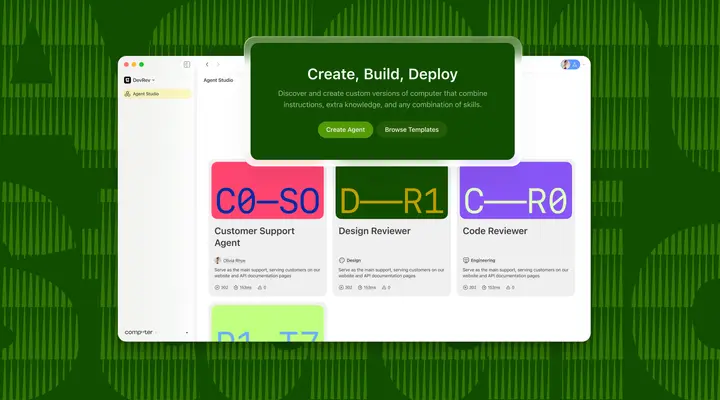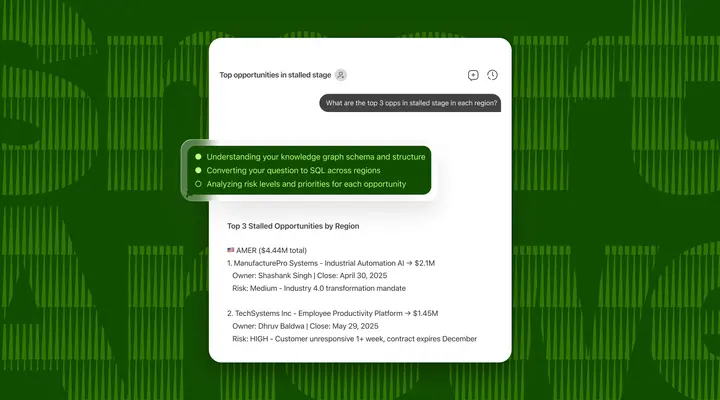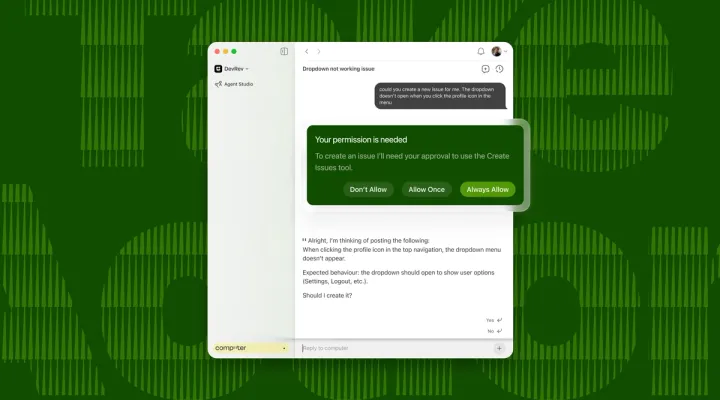India is no stranger to transformation. A decade ago, the seeds of a new India were sown. Mobile phones became ubiquitous, data turned free, digital payments revolutionized commerce, and the Indian SaaS industry was coming of age.
Fast forward to today, and India is looked upon as one of the biggest global innovation hubs in the world. And the Indian SaaS market size is forecasted to reach $50 billion in ARR by 2030.
But for all its talent and promise, India risks falling into a trap. The SaaS tools powering businesses feel like relics of a slower, simpler time. In the global sprint for AI dominance, these clunky tools are shackles that keep India running, when it should be soaring.
Without bold innovation, this demographic dividend—this wellspring of young talent and creativity—will dwindle before our very eyes. India’s chance to lead the global charge will slip away, and worse, India will get old before it gets rich.
India doesn’t need to play catch-up; it needs to leap ahead. The future belongs to AI-native systems that are smart, scalable, and built to thrive in a complex, ever-evolving world. And if you, as a business leader, embrace this revolution now, you’ll be part of India 2.0—the transformation that will redefine how the world works, innovates, and grows.
The origins of India’s SaaS journey
The seeds of SaaS in India were planted in the early 2000s, a time when the internet was beginning to reshape how businesses operated. Indian engineers, already celebrated for their technical prowess in global IT services, saw an opportunity to build something bigger. No longer content with executing outsourced projects, Indian entrepreneurs began to ask a fundamental question: Why couldn’t India create products for the world?
By the 2010s, startups sprouted across Indian cities like Bengaluru, Hyderabad, Chennai, and beyond, creating a thriving ecosystem that fueled innovation. They fostered a sense of community among entrepreneurs, investors, and developers, all working toward a common goal: to put India on the global SaaS map.
Initiatives by the Indian government like Startup India further accelerated this growth, offering tax benefits, funding support, and infrastructure to budding enterprises. At the same time, venture capital flowed into the sector, with investors eager to back companies that combined cost efficiency with global ambition.
In the 2020s, India’s SaaS ecosystem weathered the COVID-19 pandemic and the funding winter to continue its remarkable growth story. As per SaaSBoomi, India’s community of SaaS founders, there are over 20 SaaS unicorns out of India with an overall valuation of over $55.5+ billion.
Why SaaS 1.0 is no longer enough for India’s ambitions
The current SaaS model, which propelled India into the global software limelight, is now reaching its limits. Today, enterprises don’t just want affordable tools; they want systems that are intelligent, adaptable, and designed to handle complexity at scale.
Over time, SaaS has evolved into a fragmented, inefficient model plagued by tool sprawl, data silos, and operational challenges. Adding to this, the AI-driven software era and rising customer expectations for seamless, personalized experiences further expose its limits.
Simply put, legacy SaaS, or SaaS 1.0, is no longer enough. For India’s SaaS industry to sustain its growth and global relevance, it must move beyond iteration and embrace innovation on an entirely new level.
Let’s take a closer look at the challenges to understand why the current SaaS model no longer works for India.
Challenge 1: Evolving demands of modern work
The way Indian employees operate has transformed drastically since the pandemic, and legacy SaaS tools have struggled to keep pace. The rise of hybrid work, distributed teams, and real-time decision-making demands adaptability and speed that static SaaS 1.0 platforms simply can’t deliver.
Hybrid work as the new normal:
Before the pandemic, centralized offices were the standard. Today, hybrid work dominates, requiring real-time collaboration tools and adaptive workflows. SaaS 1.0 platforms that are designed for rigid, static environments fall short in supporting these dynamic needs.
Distributed teams and global operations:
With teams now spread across time zones and regions, businesses need tools that adapt to diverse operational requirements. One-size-fits-all SaaS 1.0 platforms lack this flexibility.
Need for real-time decision-making:
Today’s enterprises are inundated with data, and decisions must be instantaneous. Static dashboards and manual reporting tools, hallmarks of SaaS 1.0, can’t keep up. A sales team relying on such tools for CRM management often wastes time on manual data entry and outdated reports.
Challenge 2: Shifting customer expectations
Customer expectations have undergone a dramatic shift post-pandemic, leaving legacy SaaS tools struggling to keep up. The demand for hyper-personalized experiences and instant service now defines customer satisfaction, and SaaS 1.0 platforms fall short of delivering on these fronts.
Personalization is no longer optional:
Forrester reveals that 66% of B2B customers expect fully or mostly personalized experience while purchasing software. However, legacy SaaS tools lack the depth to provide this level of hyper-personalization. Customer support teams relying on static systems often spend hours manually sifting through data to identify patterns and solutions.
For instance, a support team using a SaaS 1.0 ticketing system may struggle to address recurring issues efficiently, leaving customers frustrated.
Speed defines customer satisfaction:
Customers who get a response in less than two hours are the most satisfied, research shows. Legacy SaaS platforms, designed for an earlier era of customer interaction, can’t meet the speed that today’s consumers demand. And customer loyalty increasingly hinges on delivering fast, customized, and seamless experiences at scale. Automation has become a necessity, not a luxury, but legacy SaaS systems rely heavily on manual processes that slow down service.
During the holiday rush, an e-commerce company relying on SaaS 1.0 systems may face delays in processing returns or identifying fraudulent activities. This inefficiency can erode customer trust.
Challenge 3: Incompatible with AI-driven workflows
Legacy SaaS tools perform fixed tasks, ending up creating data silos and disjointed workflows. But AI-native systems can learn and adapt continuously, and can consolidate tools into a unified interface. Instead of toggling between apps, users access holistic insights and real-time recommendations.
But to achieve this, trying to retrofit AI features to outdated SaaS platforms won’t do any good. As Daniel Newman writes in Forbes, SaaS companies that merely embed AI features on their existing software and seek to charge incremental fees are more vulnerable to becoming obsolete.
The future belongs to agentic AI, which automates high-volume tasks, improves with reinforcement learning, and proactively delivers insights, he adds. For example, a CEO could wake up one morning and have AI provide them with things like a proactive dashboard with key metrics and a reasoning engine to suggest next steps.
“I truly think people will still subscribe and pay a recurring fee for a turnkey offering rather than rebuild or customize something to work for them,” Newman notes. “SaaS isn’t dead; instead, it is changing dramatically.”
India’s SaaS industry must evolve quickly by upskilling talent, investing in R&D, and competing with global players. AI-native platforms aren’t just the future—they’re a necessity for India to remain competitive in the rapidly evolving global market. The time to act is now.
Challenge 4: Adapting SaaS for India’s young workforce
As per the Indian government’s Economic Survey 2023-24, 65% of India’s 1.4 billion population is under 35 years of age, and about 51.25% of the youth is deemed employable, as per the Survey. This means, every second college graduate is employable, and this number is growing fast, creating a massive reservoir of talent that can fuel economic growth.
This demographic dividend has the potential to catapult India into the ranks of developed nations, but only if it is effectively mobilized.
India’s burgeoning startup ecosystem is staffed by highly skilled, ambitious professionals—largely in their 20s and 30s—who expect cutting-edge tools to power their creativity and efficiency. Yet, reliance on SaaS 1.0 systems leaves these employees bogged down by outdated workflows:
Manual data entry:
Young sales and marketing teams often waste hours inputting data into static systems, rather than focusing on strategy and execution.
Fragmented collaboration:
Distributed teams struggle with tools that lack seamless integrations, leading to inefficiencies and miscommunication.
Lack of AI adoption:
With AI being the driving force of today’s global innovation, teams are still stuck with legacy SaaS tools that rob them of the opportunity of adopting AI-native workflows.
By adopting scalable, modern platforms designed for a distributed and diverse workforce, Indian businesses can unlock the true potential of their young workforce, driving growth and innovation on a global scale. Without this shift, India risks leaving its most valuable resource—the aspirations of its youth—untapped.
Leapfrogging to SaaS 2.0: Why India deserves a modern business operating system
If these challenges are not addressed, India risks missing the window of opportunity provided by its demographic dividend. As the population ages, the ratio of employees to dependents will shift, creating economic strain. In other words, India must get rich before it gets old.
This urgency necessitates a modern business operating system—one that leverages technology to optimize productivity, enhance quality of life for employees and customers alike, and create scalable, future-ready solutions for businesses.
Here’s the good news: Instead of iterating on an outdated model, India can leapfrog to AI-native SaaS. India did it before, moving directly from landlines to mobile phones. Now, it can do the same with SaaS 2.0.
Imagine an India where software doesn’t just react to your commands but anticipates your needs. Where platforms that evolve alongside your business, learning from every interaction to deliver smarter, faster, and more precise outcomes. Where systems that don’t just streamline your workflows but fundamentally transform them, making your operations more agile and your decisions more informed.
This isn’t a distant dream. It’s the reality promised by AI-native solutions—and it’s at the core of India 2.0.
A modern business operating system is not just software. It’s a philosophy, a framework that redefines how businesses operate, innovate, and grow. At its core, the modern business operating system that India 2.0 operates on must be:
1. AI-native
2. Cloud-native
3. Mobile-native
1. AI-native: Intelligent, adaptive, and future-ready
AI-native systems are the crown jewel of a modern business operating system. Unlike traditional software, which is static and reactive, AI-native platforms are designed to be intelligent and adaptive from the ground up.
Why it matters:
- AI-native systems automate complex workflows, reducing operational overhead.
- They provide predictive insights, enabling businesses to make faster, smarter decisions.
- AI continuously learns and evolves, ensuring that the system remains relevant as the business grows.
2. Mobile-native: Designed for a mobile-first workforce
With the massive increase in internet adoption across India, there exists a massive demand for smartphones. In fact, Deloitte forecasts that India will have 1 billion smartphone users by 2026. So, mobile accessibility is no longer optional—it’s foundational. A modern operating system must prioritize mobile as the primary mode of interaction.
Why it matters:
- Mobile-native systems enable businesses to reach employees in remote areas, democratizing access to tools and opportunities.
- They provide flexibility for hybrid work models, where employees may need to switch between office and remote settings seamlessly.
3. Cloud-native: Built for global scalability
The cloud is the backbone of modern business. Cloud-native systems allow businesses to scale rapidly, deploy resources efficiently, and adapt to changing market conditions without the limitations of on-premises infrastructure.
Why it matters:
- Cloud-native systems reduce costs by eliminating the need for expensive hardware.
- They provide unparalleled flexibility, enabling businesses to expand into new markets with minimal friction.
India 2.0: The future of work made Effortless
The world is watching. The stage is set. India is set to become the third-largest economy, and has the talent, ambition, and opportunity to lead the global AI revolution. But the time to act is now.
To solidify its position as a global AI powerhouse, India must embrace scalable, AI-native solutions that simplify complexity, accelerate growth, and drive efficiencies.
At DevRev, we’ve been at the forefront of driving the AI-native innovation with our AgentOS platform that brings Support, Product, and Engineering teams together on a singular platform to redefine enterprise workflows and provide exceptional customer experiences. Unlike legacy platforms that come with bolt-on AI features, DevRev’s architecture was designed from the ground up with AI in mind, making it truly AI-native.
Our AI-first platform does all the heavylifting to help teams focus only on high-impact activities that deliver maximum value to customers. This is our operating principle: When machines do more, humans can do fewer things but better.
To realize India’s tryst with AI, DevRev will organize Effortless Mumbai 2025—the only industry conference that brings AI and Design together. Leading changemakers in AI, Enterprise Tech, and Product Design will discuss how India 2.0 will become a reality through AI-led scaling of businesses, simplifying enterprise workflows, and upskilling of young professionals to get the most out of AI.
In short, Effortless ‘25 will shine a light on how India can become a Product Nation.
Excited about India 2.0? Register now for Effortless ‘25 by DevRev.





